Weekly cattle and sheep market wrap
Key points
- National cattle yardings fell 7% as producers’ sentiment increased after recent east coast rainfall.
- Restocker and Processor Cow Indicators lifted due to strong demand, despite increased yardings in some states.
- Restocker lamb demand strengthened following southern states’ rainfall.
Cattle market
Rainfall along the east coast improved producer sentiment, resulting in a 7% decline in national cattle yardings to 58,162 head. Yardings are now 27% below the 80,278 head seen in mid-October. Victoria recorded the sharpest week-on-week (WoW) decline, falling 32%, followed by Queensland (-11%) and WA (-5%). In contrast, NSW increased 12% after a low yarding the previous week.
The Restocker Yearling Steer Indicator rose 16¢ to 484¢/kg liveweight (lwt), driven by heightened demand from Victorian restockers purchasing in northern saleyards. In NSW, the indicator lifted 21¢, influenced by strong southern buyer activity that increased competition across key markets.
The Processor Cow Indicator also increased − rising 16¢ to 398¢/kg lwt. The lift came despite increased yardings, suggesting strong and sustained demand. Victorian prices surged 34¢ to 425¢/kg lwt, while NSW prices lifted 20¢ to 405¢/kg lwt. Queensland prices remained steady at 373¢/kg lwt.
Sheep market
National sheep yardings lifted 6% to 101,528 head following a subdued week. Despite the rise, yardings remain below the October weekly average of 111,000 head. Lamb yardings also rose 6% to 198,723 head as the flow of new season lambs continued to build.
The Light Lamb Indicator gained 18¢ to 1,045¢/kg carcase weight (cwt). Producers responded to last week's price lift, with higher yardings and strong competition from export processors. According to Meat & Livestock Australia’s (MLA) Wagga Livestock Market Officer Lean Dax, excellent quality lambs above 20kg cwt drew strong processor competition.
The Restocker Lamb Indicator climbed 26¢ to 1,116¢/kg cwt. Recent rainfall in the east has underpinned demand in southern markets. The indicator rose 60¢ to 1,149¢/kg cwt in SA and increased 58¢ to 1,128¢/kg cwt in Victoria.
Slaughter
Week ending 31 October 2025
Cattle slaughter
National cattle slaughter dropped 2% to 155,627 head after the previous week recorded the second-highest throughput volume since 2019. The drop, driven by rain across the east coast, reduced throughput in Queensland (-3%) and Victoria (-4%), although volumes remain relatively high and above the 2025 weekly state averages. The other states increased WoW throughput but not enough to offset Queensland and Victorian declines.
State-by-state breakdown of cattle slaughter:
- NSW: up 0.3% at 35,938
- Queensland: down 3% to 81,738
- SA: up 0.2% to 3,821
- Tasmania: up 11% to 5,012
- Victoria: down 4% to 25,434
- WA: up 2% at 3,684.
Sheep slaughter
National sheep and lamb throughput lifted 1% to 633,973 head. This lift follows seasonal patterns of increased supply resulting from the new season lamb flush and all processing plants again being fully operational. Victoria lifted 3% to 285,067 head, followed by NSW up 2% to 191,022 head and a 1% increase in WA to 91,710 head. National lamb slaughter was stable at 436,955 head with mixed state performances. Victoria’s 2% lift to 224,732 head was offset by declines in NSW (-2% to 109,206 head), Queensland (-6% to 41,946 head) and WA (-2% to 52,092 head). With the spring lamb flush this week, throughput is 3% above the national weekly average of 425,472 head.
National sheep slaughter lifted 3% to 197,018 head, led by increases in NSW (+7% to 81,816 head), WA (+4% to 39,618) and VIC (+3% to 60,335 head). This follows seasonal turn-off patterns of old and dry mutton.
State-by-state breakdown of lamb slaughter:
- NSW: down 2% to 109,206
- Queensland: down 6% to 1,163
- SA: down 9% to 41,946
- Tasmania: up 11% to 7,816
- Victoria: up 2% to 224,732
- WA: down 2% to 52,092.
Attribute content to Emiliano Diaz, MLA Market Information Analyst.
Information is correct at time of publication on 7 November 2025.



